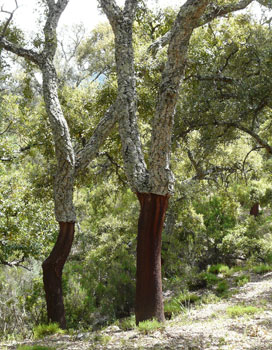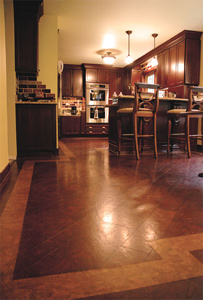 Who knew this under-appreciated renewable resource was good for so many things? Most are familiar with cork as a bottle stopper. A 1600s French monk named Dom Perignon was the first to have fitted his sparkling wine with this unique bottle sealer, and it has, until recently, been the standard in the wine industry. With times and technology changing, many bottlers have begun to move towards a petroleum derived thermoplastic elastomer as a stopper. The reasons for this are primarily due to the natural properties of cork such as drying over time (allowing some leakage into the bottle) and cork taint, or trichloroanisole (TCA). TCA is caused when microorganisms in the natural cork combine with chemical contaminants used in the production process to kill bacteria. Some places, such as Penfolds, of Australia, have addressed the cork aging issue by holding workshops where consumers can bring in old bottles of wine, have the corks replaced, and even get a small sip to see how the wine is aging. However, with a 20% drop in wine industry cork sales between 2000 and 2005, what will become of existing cork orchards and this sustainable industry?
Who knew this under-appreciated renewable resource was good for so many things? Most are familiar with cork as a bottle stopper. A 1600s French monk named Dom Perignon was the first to have fitted his sparkling wine with this unique bottle sealer, and it has, until recently, been the standard in the wine industry. With times and technology changing, many bottlers have begun to move towards a petroleum derived thermoplastic elastomer as a stopper. The reasons for this are primarily due to the natural properties of cork such as drying over time (allowing some leakage into the bottle) and cork taint, or trichloroanisole (TCA). TCA is caused when microorganisms in the natural cork combine with chemical contaminants used in the production process to kill bacteria. Some places, such as Penfolds, of Australia, have addressed the cork aging issue by holding workshops where consumers can bring in old bottles of wine, have the corks replaced, and even get a small sip to see how the wine is aging. However, with a 20% drop in wine industry cork sales between 2000 and 2005, what will become of existing cork orchards and this sustainable industry?
 First lets explore what cork is all about.
First lets explore what cork is all about.
Natural cork comes from the bark of cork oak trees (Quercus suber). The bark is harvested without harm to the tree, and will renew itself naturally over the period of 10-12 years before being harvested again. A cork oak tree can be harvested twelve times in its lifetime with the first harvest taking place after approximately 25 years. Cork harvesting is done by hand without the aid of machinery. Additionally, cork harvesting can actually aid in combating global warming as each time cork is harvested the tree absorbs more CO2 to aid in the regeneration process. Regularly harvested cork trees store 3-5 times more CO2 than those left unharvested. Portugal is the world’s leader in cork production, while it is also an important forest crop in Italy, Spain, Algeria, France, Tunisia, and Morocco.
 What else can cork be used for?
What else can cork be used for?
Cork is common in flooring and wall covering applications and can have many benefits over other manufactured surfaces. Cork is light, wear resistant, elastic, impermeable and well insulated. It works exceptionally well for heat and sound insulating applications such as cold basement floors and walls (we actually have cork floors at my office building in Downtown Seattle). Cork flooring can be a great alternative to linoleum or wood, and works well in everything from basements, laundry rooms, bathrooms and even can look elegant in kitchens and entryways. It can be dyed to a variety of colors and comes in a wide range of textures and cuts. They are most commonly sold as square tiles due to the harvesting process providing a varying and limiting dimensions.
We have all seen or used cork boards for posting memos, calendars and photos on the wall, but the applications are limitless (i have even seen an article on the cork interior of a Mercedes automobile). It really is a wonder renewable. It has so many desirable properties, is entirely natural, and is fully biodegradable upon disposal. Comment to this post with some of the creative ways you have used cork.
Comments 5
Hi,
On our blog we take readers on a field trip to see all the great things that can be made with cork oak. It’s called “A Grown Up Field Trip…Green Design with Cork Oak”. You may be interested in the wonderful designs coming out of the creative minds of eco-friendly designers! We hope you visit.
http://wicanderscorkoakblog.com/2008/07/07/kidagain/
Cheers.
Team Wicanders.
Pingback: Renewable Cork Barware Set for the Green Chic Drink Bartender | The Chic Ecologist
Pingback: Natural Fitness Soft Weighted Balls « 1GreenProduct
Pingback: Bark Shingles to Green Your Home | The Chic Ecologist
Pingback: Eco Custom Home's Newsroom » Blog Archive » Eco-Friendly Bark Shingles Home Siding